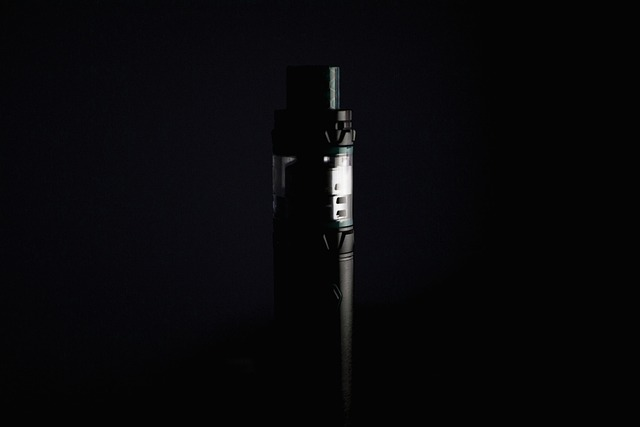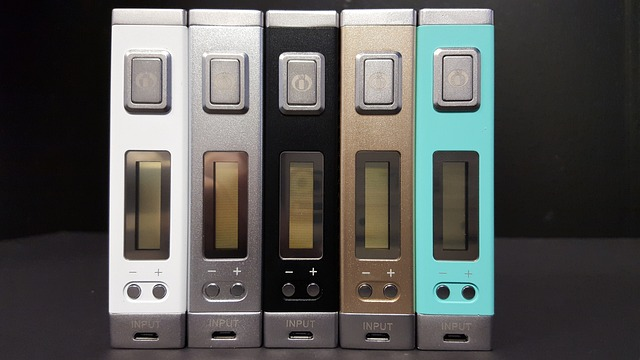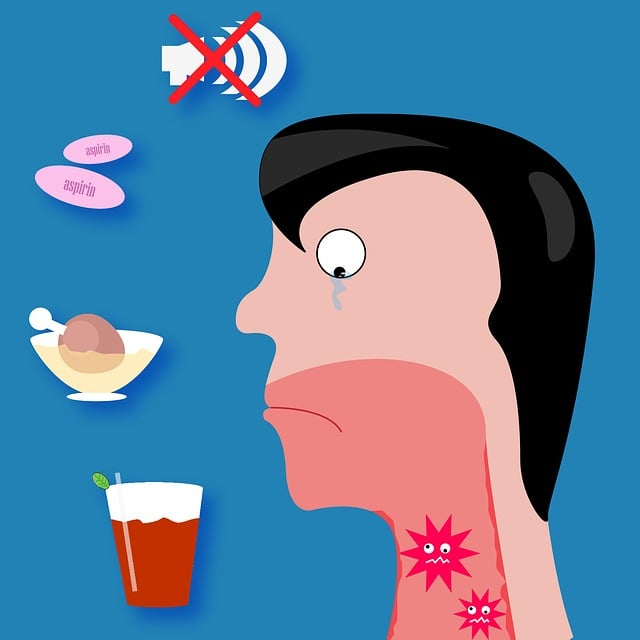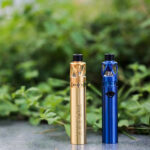Are you wondering if water-based vape options offer a healthier alternative to traditional vaping options? Water based vape technology utilizes liquids with a significant water component, potentially offering a smoother experience and fewer harmful emissions. Dive into the details of how this innovative approach to vaping could impact your health and elevate your vaping experience.
Key Takeaways
- Water-based vaping, such as Aquios Labs’ AQ30 with 30% water content, offers smoother vapor and potentially healthier alternatives to traditional e-liquids by reducing harmful emissions and preserving endothelial function.
- Innovative hardware designs, like the Lota F600 and Innobar series, and technologies, such as mesh coils, are evolving to optimize the use of water-based e-liquids and enhance vaping experiences with features like smoother vapor, improved flavor purity, and efficient battery usage.
- While water-based vaping seems to have several health and experiential benefits, considerations include reduced vapor cloud production, a milder throat hit, potential compatibility issues with regular vaping hardware, and the need for further research on long-term safety.
Understanding Water Based Vaping

Aquios Labs has pioneered an evolution in the vaping world through its introduction of water-based e-liquids, marking a notable departure from traditional vaping practices. Utilizing the inherent qualities of water, these novel e-liquids are reshaping the landscape of vaping by enhancing users’ experiences with their unique features and emerging advantages that appeal to a growing number of enthusiasts.
In exploring this innovative approach, we delve into what water-based e liquids entail. We’ll examine how they operate on scientific fundamentals distinct from conventional liquids used for vaping and compare them to standard options within the industry—unveiling practical implications for everyday use.
The Basics of Water Based E-Liquids
In essence, water-based e liquids represent a distinct category of vape juice that significantly incorporates water into its composition. An example of this is the AQ30 by Aquios Labs which is notably comprised of 30% water, setting it apart from conventional e liquids that are typically made up largely of vegetable glycerin and propylene glycol. As interest in vape water escalates, an increasing number of individuals are considering these types of e liquids as potential alternatives.
This higher concentration of water within such e-liquids not only sets them apart, but might also contribute to a unique and potentially improved vaping experience.
The Science Behind Water Based Vaping Technology
The real magic behind water-based vaping lies in its ground-breaking technology. Aquios Labs, a pioneer in this field, has innovated the AQ30 technology, designed to deliver smoother vapor and purer flavors with rapid satisfaction. This technology incorporates a 30% water composition, with ambitions to increase this percentage further to optimize vaping benefits.
Water-based vaping devices are specifically designed to solve common challenges like leaks and dry hits that might occur with less viscous e-liquids. Furthermore, owing to their operation at considerably lower temperatures than conventional vaping devices, water-based vaping technology augments the overall experience.
Comparing Water Based and Traditional E-Liquids
In contrast to the standard PG:VG e-liquids, water-based e liquids bring forth a variety of advantages. For example, while regular e-liquids may reduce the availability of nitric oxide and potentially harm endothelial function, their water-based counterparts serve to mitigate vapor-induced dehydration effects that often lead to sensations of dry mouth frequently experienced with vaping.
By minimizing VG content and incorporating water into their composition, these water based e liquids are designed to offer a smoother vaping experience by diminishing the likelihood of oral dehydration.
Health Implications of Water Based Vape

Transitioning to a water-based vaping system is seen as an improvement towards a more health-conscious vape. The appeal lies in its ability to emit fewer harmful substances due to the lower heat required for operation, which could play a role in harm reduction.
Consider vital health aspects such as effects on respiratory health, the development of adolescents brains, and vascular function — how does this innovation impact these areas?
Respiratory Health and Water Based Vaping
When it comes to respiratory health, water-based e-liquids offer a breath of fresh air. They can significantly reduce acetaldehyde and formaldehyde emissions, with reductions of 91% and 81% respectively, when compared to traditional vapes. Moreover, water-based e-liquids, with their lower VG and PG content, potentially reduce dehydration and may offer hydration benefits, improving overall respiratory comfort. However, it’s important to note that the long-term effects of electronic cigarettes aerosol inhalation using water-based e-liquids on respiratory health are still under investigation, with no conclusive results yet available.
Intriguingly, some components in water-based e-liquids, such as propylene glycol, nicotine, and specific flavorings, might have antibacterial properties, possibly counterbalancing bacterial risks in these types of e-liquids.
Adolescent Brain Development and Nicotine Free Options
Exposure to nicotine during adolescence, which is a vital phase for brain maturation extending up to roughly the age of 25, may hinder normal brain development. This can have enduring consequences on cognitive functions such as learning, memory retention, and focusing ability. Even e-cigarettes that do not contain nicotine might predispose young individuals to subsequent addiction issues with nicotine or other substances. Studies indicate that using non-nicotine liquids in e-cigarettes could impair blood circulation among healthy non-smokers—a hint at underlying health dangers.
It appears that the prevalence of adolescents using e-cigarettes might actually be greater than what is captured by national surveys. This discrepancy suggests an underreporting problem and means we may be underestimating how often teenagers are using these devices.
Vascular Function Detected in Water Based Vape Users
Diving deeper into the potential health impacts of water-based vaping, there are encouraging signs regarding its effects on vascular function. Endothelial function, which is a crucial marker for cardiovascular well-being, demonstrates how effectively blood vessels can expand and contract. There’s evidence that indicates users who transition from traditional vaping methods to those based on water may see improvements in their vascular functions, hinting at possible cardiovascular advantages.
Comparative studies between conventional vape products and those utilizing water have observed that the aerosol produced by water-based vapes has a diminished impact on vascular endothelial health. Research employing flow-mediated dilation (FMD) techniques suggests that using a water based vape might be linked with reduced disruption to vascular functioning when contrasted with standard vaping practices.
The Vaping Device Evolution

Vaping technology is undergoing a significant transformation with the advent of water-based e-liquids, and to keep pace, vaping devices are also advancing. The year 2022 marked an important milestone in e-liquid innovation as advancements within the realm of water-based vaping were recognized with industry accolades. Devices tailored for these innovations, such as the Innobar series and Lota F600, have been specifically crafted to effectively manage the thinner consistency typical of water-based e liquids.
As we peer into what lies ahead for this sector, it’s anticipated that Developments in water-based vaping could usher in a new generation of ultrasonic vaping devices. These advanced systems hold promise not only for diminishing ecological impact but also potentially prolonging the service life of various components associated with liquid vaporization technologies.
Design Innovations for Water Based Vaping Devices
Vaping devices that utilize water-based e-liquids are a leap forward in both innovation and design. Developed by Aquios Labs, the world’s first such device is known as the Lota F600. These specific vaping devices combat common issues like leaks and dry hits with custom hardware modifications because traditional vape kits can dangerously emit hot droplets when used with water-based liquids, making these adjustments vital.
There are numerous benefits to using water-based e liquids over conventional vaping juices.
- They heat up at a lower temperature which may decrease toxin production.
- Users can enjoy a smoother experience while vaping.
For example, one prominent product offering this technology is the transparent silicone-shelled Innobar F600.
Mesh Coil Technology in Water Based Vapes
In the realm of water-based vaping, mesh coil technology has significantly advanced the performance of vaping devices. These coils use a mesh design composed of flattened metal sheets with multiple holes, considerably increasing their heating surface area. This augmented area not only boosts vapor creation but surpasses traditional wire coils in terms of efficiency. The larger surface also more effectively draws out flavors from e-liquids, offering vapers an enhanced taste experience and minimizing instances where e-liquids become overheated and produce a burnt flavor.
Disposable vapes that integrate mesh coil technology reap several benefits.
- They sustain higher puff counts before there’s any noticeable degradation in performance or flavor intensity, thus prolonging device usability.
- Mesh coils heat up rapidly which means disposable vapes can generate vapor almost immediately upon activation.
- Such a feature is particularly attractive to users desiring quick and continuous access to puffs during their vaping sessions.
Battery Efficiency and Lower Temperature Vaping
Vaping with water-based e-liquids not only enhances flavor and the overall smoothness of the vape, but also improves battery life due to their capacity for vaporization at reduced temperatures. The diminished energy requirements that come with lower temperature vaping mean batteries are conserved, while devices avoid overheating, which prolongs their longevity and ensures the e-liquid’s chemical composition remains intact.
Contemporary vaping hardware—standard in today’s market—is equipped with adjustable voltage settings. This allows vapers to tailor their experience by selecting temperatures that best amplify taste and provide a velvety vapor consistency when using water based vaping liquids.
Advantages of Switching to Water Based Vapes

Have you considered transitioning to water-based vaping? The advantages are numerous and compelling. Water-based e-liquids facilitate a safer vaporization process at reduced temperatures, potentially diminishing risks associated with conventional vaping techniques. Innovations such as the Aquios Bar Water-based Disposable Vape are leading this movement by delivering an exceptionally gratifying vape experience.
In sum, opting for water-based e liquids offers substantial benefits related not only to possible health improvements but also to enhancing the quality of your vaping journey.
Enhanced Flavour Clarity and Purer Tastes
Water-based vaping stands out for its ability to deliver a more unadulterated and clear flavor experience. Compared to traditional VG or PG carriers, water serves as a superior medium that faithfully conveys the natural essence of flavors without distortion, thus offering users an enhancement in flavor clarity and allowing them to enjoy tastes just as they are meant to be.
The absence of vegetable glycerin’s intrinsic sweetness in water-based e-liquids means that the genuine taste profiles of the actual flavorings come through more distinctly. By reducing vegetable glycerine’s sweetening effect on liquids, users can savor purer flavors with only a subtle hint of sweetness, creating an experience closer to tasting true-to-life flavors when vaping.
Smoother Vapour and Reduced Throat Irritation

E-liquids based on water help to provide a more pleasant vaping experience by diminishing the harshness that is often associated with conventional e-liquids. Advantages of using these water-based solutions for vaping include:
- A gentler inhalation experience
- Less throat discomfort
- Finer vapor production
- More effective absorption of nicotine
When vaped at lower temperatures, these water-enriched liquids produce finer vapors which contribute to a silkier and less irritating sensation during use. E-liquids like AQ30 containing roughly 30 percent water have demonstrated an ability to offer both smoother vapor and heightened efficiency in delivering nicotine.
Incorporating water into vape juices, while also reducing levels of VG (vegetable glycerin) and PG (propylene glycol), mitigates dehydration—a primary factor behind throat irritation from vaping. Devices such as the CCELL Palm Pro, equipped with features like adjustable airflow settings, allow individuals to customize their experiences for cooler and more agreeable vapor creation.
Quicker Satisfaction and Alleviation of Dry Mouth
Water-based e liquids, such as those employing Aquios AQ30 technology with a 30% water content, provide not only smoother vapors and better taste, but also lead to quicker gratification while helping to prevent the dry mouth often associated with vaping. These fluids increase bioavailability compared to typical vapes because their higher water content permits nicotine to be absorbed more quickly and effectively from each inhalation. With less vegetable glycerin and propylene glycol than traditional e-liquids, these water-based options are designed for reduced dehydration effects.
The key advantages of using AQ30 vape liquid include:
- Enhanced smoothness in vapor production
- More effective absorption of nicotine into the bloodstream
- Speedier fulfillment from vaping sessions
- A decrease in common dehydrating side-effects linked with traditional liquids used for vaping.
Disadvantages and Considerations
It’s important to acknowledge that although there are considerable advantages to water-based vaping, one must also consider the possible downsides. Water-based vaping might appeal to a wide range of users. Preferences and levels of satisfaction can differ among vapers. There is a possibility that some may favor traditional e-liquids for their ability to produce more substantial vapor clouds and provide a more intense throat hit.
There could be challenges regarding the compatibility with standard vaping equipment when it comes to water based liquids. These concerns merit closer examination as they play an integral role in the experience of vaping.
Cloud Production and Throat Hit for Cloud Chasers
Cloud enthusiasts, often called cloud chasers, are drawn to standard e-liquids for their ability to generate substantial vapor clouds. This is mainly a result of the high viscosity found in VG and PG blends compared with water-based liquids. On the other hand, e-liquids that have a higher water content function at lower temperatures and tend not to produce as thick a vapor cloud—potentially falling short for those who relish the voluminous vapors associated with traditional vaping products.
Many vapers seek out the distinctive sensation known as throat hit when they vape—an experience that is more intense with traditional e liquids because of their PG composition. Water-based variants offer a milder version of this feeling, which might lead to an unsatisfactory vaping experience for individuals who crave the robust throat hit typical of conventional liquids rich in PG.
Compatibility with Regular Disposables and Vaping Hardware
It’s important to consider that most current vaping devices have been engineered for the thicker consistencies of e-liquids high in vegetable glycerin (VG) and propylene glycol (PG), which may render them incompatible with water-based e liquids. Utilizing regular vaping apparatuses for these more aqueous solutions could lead to reduced effectiveness or potential harm to the device.
When attempting to vape water-based e-liquids using standard vaping technology not tailored for such use, one might encounter issues like leaking and equipment damage as a consequence of their diminished viscosity compared to traditional viscous liquids designed for vaping.
E-Liquid Toxicity and Safety Standards
Water-based e liquids are similar to their conventional counterparts in many chemical aspects and associated risks, except for the variance in water content and potential nicotine-related dangers if it’s omitted. Unlabeled nicotine in e liquids can lead to symptoms of poisoning such as perspiration, vertigo, emesis, and a heightened pulse. Flavorings might contain harmful chemicals like diacetyl, which is implicated in lung damage. Propylene glycol (PG) efficiently transmits flavors while delivering a substantial throat hit when vaping. Vegetable Glycerin (VG) provides gentler sensations, but both have scarce data regarding safety upon inhalation that underscores the necessity for extensive studies.
Emissions testing is required for devices designed for water based vaping and these products are subject to regulation by bodies including the MHRA. With long-term effects still under scrutiny, Investigation is imperative to establish all-encompassing safety benchmarks for using water based e-liquids within vaping technologies.
Market Trends and Consumer Choices
The phenomenon of water-based vaping is not merely a fleeting fad, but an emerging movement in the market, one that’s anticipated to experience considerable growth and diversification in 2023. This approach to vaping looks poised for an increased presence within the industry as major retailers specializing in vapor products and consumer goods have already started stocking items such as Aquios Bar and Esco Bar 6000 since their debut early last year. Pioneers including Aquios Labs and Innokin are making waves by bringing their own commercial offerings into this niche, indicative of heightened interest from within the sector.
So what does this evolution mean for vapers? We will delve into:
- The growing allure of water-based vaping among various user groups
- How water-based devices may offer more inconspicuous options for users seeking privacy while they vape
- Predictions about how water-based vaping could shape its role and reputation within the broader context of the vape community.
Popularity Among Different Demographics
The use of e-cigarettes, encompassing a variety of flavors, spans across different demographics such as adolescents, young adults, and the older adult population. This pattern has been confirmed by an extensive cross-sectional survey which also highlights that preferences for specific flavors can differ depending on age. The consumption of certain flavors in the past 30 days shows variation with respect to the type of device used.
When it comes to usage rates by device type, disposable e-cigarettes emerge as the frontrunners. Flavors like fruit, sweet tastes, minty profiles and menthol are consistently chosen among various age groups.
Those under 21 years—adolescents and young adults—demonstrate a higher frequency in their selection of disposable e-cigarettes and those offering diverse flavored experiences compared to individuals within the 25-40 year old bracket.
Discreet Vaping Experience with Water Based Devices
Individuals seeking a discreet vaping experience often opt for water-based vaping devices. These devices utilize water based liquids that generate less vapor than their counterparts with higher vegetable glycerine concentrations, thereby ensuring a more low-profile use.
Due to the lower temperature at which these vaping devices operate, there is reduced visible vapor output during usage. This characteristic of water based e-liquids specifically supports those who desire an inconspicuous approach to vaping.
The Future of Water Based Vaping in the Vaping Community
Looking ahead, the prospects for water-based vaping are quite positive. This innovation is considered a major advancement within the vaping community, comparable to the introduction of nicotine salts. The benefits anticipated from water-based vaping include:
- Lowering harmful emissions by operating at reduced temperatures
- Promoting wider acceptance of vaping due to new products entering key markets
- Inspiring manufacturers to integrate this technology into their product lines
As interest in safer alternatives within the industry rises, we can expect an increase in research that will likely stimulate expansion in water-based vape options. Advancements continue to be made with particular focus on ultrasonic devices that could minimize environmental impact and enhance durability of components as part of a brighter future for water-based vapes and vaping technology overall.
Looking for smoother and potentially less dehydrating vapes? Explore the new world of water-based e-liquids! Treet Vapours offers exclusive coupons to stock up on Eightvape’s innovative water-based vape line. Find your perfect water-based vape flavor at a discounted price with Treet Vapours Eightvape coupons.
Summary
To summarize, the advent of water-based vaping marks a notable transformation in the realm of vaping by potentially offering clearer flavors, gentler vapor texture, and more rapid gratification. It’s necessary to acknowledge possible downsides like diminished cloud production, a reduced throat hit, and issues with standard vaping devices compatibility. Yet these minor concerns do not eclipse the considerable positives that water-based vaping brings to the table. The prevailing market trends and consumer preferences suggest that water-based vaping has secured its place in the industry as an innovation aimed at delivering safer and more fulfilling experiences for vapers.
Frequently Asked Questions
Which vapes are water-based?
AQ30 stands as the sole water-based e-liquid option for vaping enthusiasts.
Typically, e-liquids comprise a blend of Vegetable Glycerin (VG), Propylene Glycol (PG), various flavorings, and nicotine. When heated during use, this mixture generates substantial vapor clouds.
Are water-based vapes better for you?
Currently, there is a lack of research on this matter, but using water-based e-liquid for vaping carries similar hazards and safety concerns as conventional vaping practices do, aside from the aspect concerning nicotine levels. Consequently, it cannot be assumed to be healthier.
Is flavored water vape safe?
Research indicates that the compounds formed when flavors in vape juice are heated alongside other ingredients may not be completely safe. These newly created substances could pose health risks and impact more than just the lungs in flavored water vape products.
What are the ingredients in water-based vape?
Similar to conventional e-liquids, water-based vape liquids consist of components like vegetable glycerin (VG) and propylene glycol (PG), along with flavorings. They feature a 30% water blend known as AQ30. The vaping devices designed for these liquids operate at a lower temperature to ensure the safe vaporization of the substances within.
How do water-based e-liquids differ from traditional e-liquids?
E-liquids based on water offer a distinctive vaping experience by incorporating a considerable amount of water, in contrast to conventional e-liquids which predominantly consist of VG (vegetable glycerin) and PG (propylene glycol).





